Fire Emblem Fates (Birthright, Conquest and Revelation) Review
"One game for the price of three"
When Intelligent Systems made
Fire Emblem Awakening a few years ago, they decided to make it the best installment yet. It wasn’t because they were pumped about making a new
Fire Emblem on the Nintendo 3DS or that there was a big marketing push for it, it was quite the opposite. See, throughout the years,
Fire Emblem was declining in popularity worldwide for some time, and
Awakening was sort of a send off to the franchise as a whole. What was supposed to be the final
Fire Emblem ended up becoming the best-selling version in the series’ 20+ year history by a wide margin. Since then,
Fire Emblem has gotten a push to become a bigger franchise in Nintendo’s catalog with a Atlus-developed spinoff for Wii U and another, more ambitious mainline successor for the 3DS:
Fire Emblem Fates.
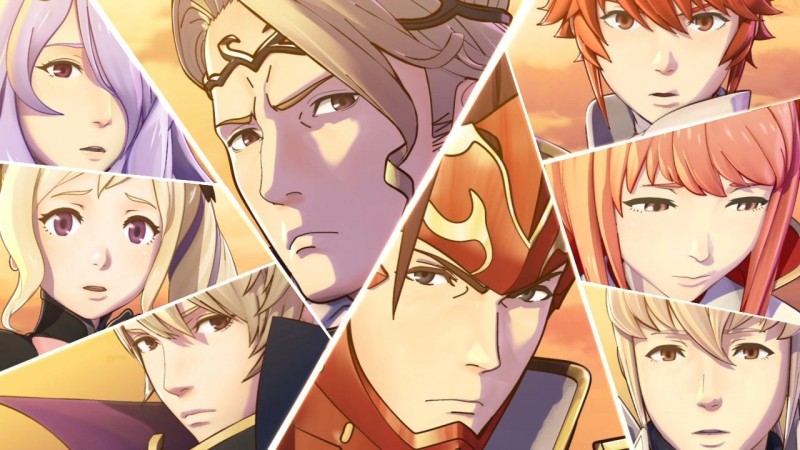 Fire Emblem Fates
Fire Emblem Fates is a weird game to review because it’s three games that are being reviewed:
Fire Emblem Fates: Birthright,
Fire Emblem Fates: Conquest and
Fire Emblem Fates: Revelation, with each of them following a different “what if” scenario during a bitter war between two nations.
You follow Corrin, a customizable avatar much like
Awakening’s Robin, a princess (or prince, though she will be referred as a female in the review) of the Japanese-esque Hoshido that was kidnapped at a young age and raised with the royal family of the European-looking Nohr. Corrin learns of her Hoshidian backstory as well as her dragon origins after stumbling into the country, and with a more educated opinion must decide in front of both royal families which side to fight on.
Birthright
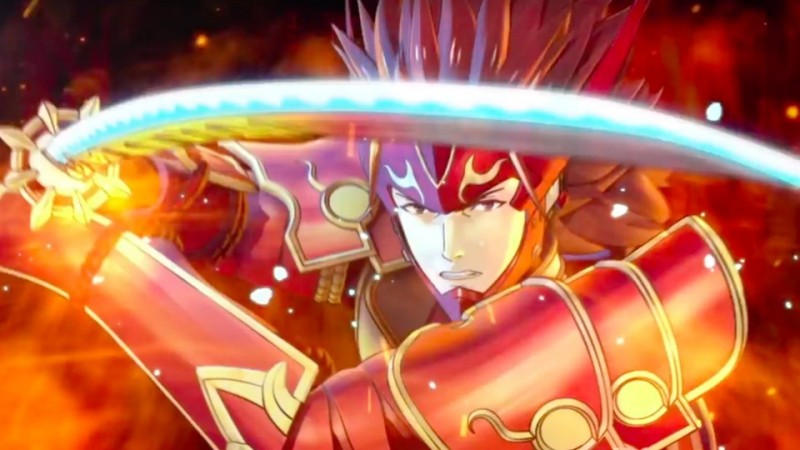 Fire Emblem Fates: Birthright
Fire Emblem Fates: Birthright is where Corrin chooses Hoshido over her known family in Nohr. There she joins her bloodline siblings Ryoma, Takumi, Sakura and Hinoka and stop Nohr’s King Garon (Your kidnapper/foster father) from invading Hoshido.
The story in
Birthright trumps the one in
Conquest because the land of Hoshido is one fresh and cool in the
Fire Emblem series. Normally
Fire Emblem characters look very medieval in tone, with knights, mages and thieves equipping swords, spears, knives, axes and using magical rods, Conquest included. Since Hoshido is Japanese in tone, characters look like those in feudal Japan with samurai, ninjas and shrine maidens wielding katanas, naginanas, shurikens and magical festals. Despite a few in-game traits, this change is mainly aesthetic, but it doesn’t stop looking cool in the process. In addition the locales in Hoshido are bright colorful and different to the series, while Nohr is bleak, dark, dreary and quite a downer in comparison. Granted, that’s the point of the two versions and their very different nations, but Hoshido not only look better, it’s exhilarating for the
Fire Emblem universe.
Birthright plays most like
Fire Emblem Awakening, and is the most recommended place to begin in the
Fire Emblem Fates trilogy. All the Fire
Emblem Fates games are grid-based strategy RPGs with the same exact gameplay mechanics and twenty-seven story chapters,
Birthright is the simpler of the bunch. Most of the goals within the Hoshido campaign are to defeat all the enemies on the map, and unlike
Conquest, you can replay stages and grind your party to your hearts desire. This one is the best to start for newcomers because it gets them used to the mechanics, while veterans can take care of the easiest one first since it’ll feel like a downgrade if you’re playing this one secondly.
Conquest
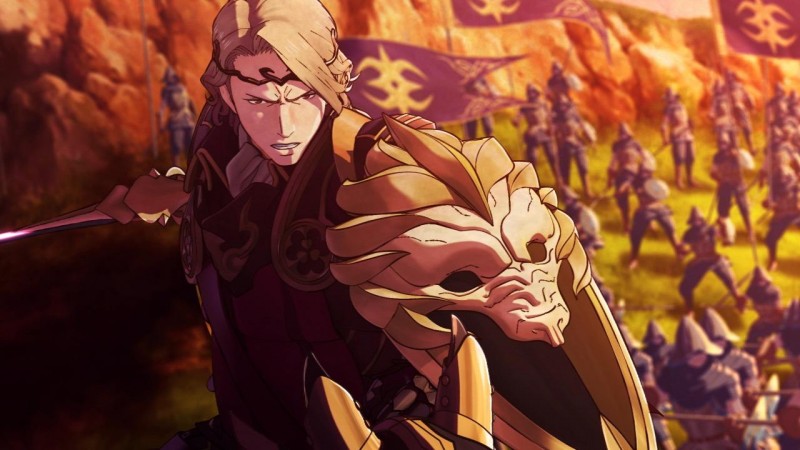
Meanwhile
Fire Emblem Fates: Conquest is the other side of the story and Corrin sticks with her Nohrian brothers and sisters: Xander, Leo, Camilla and Elise. Returning from Hoshido, Corrin is tasked by King Garon to calm a revolution brewing in Nohr while conspiring to invade Hoshido to claim its throne to stop the true evil within the two kingdoms.
To be honest, playing
Conquest right after
Birthright was tough because reverting to the same old medieval theme after the breath of fresh air that was Hoshido. While that was true through most of the game, your allies, mainly your siblings and their loyalty to Corrin made me care about them despite dealing with them mere hours ago in
Birthright. Corrin is no slouch either, where
Birthright is more traditional “good guys defend against bad guys,” she has to endure some tough decisions in
Conquest while Garon and his ruthless retainers breathe down her back. Corrin also feels more like a leader as her siblings and allies follow her un-Nohr-like choices backed by trust; especially compared to
Birthright, where she continues the path Ryoma already started and performing nothing but common sense decisions.
Unlike
Birthright, there are few battles in
Conquest where the sole goal is to rout the enemy. You will be retreating, fighting with time limits and sieging the base (which is only killing the boss and landing on their space to end the fight). These fights are rife with enemy reinforcements and difficult map terrain to cover too, and if that’s not enough, you cannot replay stages either. This limits what you can do throughout the twenty-seven chapters since it makes you have to think smartly and clearly when it comes many of the other gameplay elements like building relationships and the My Castle upgrades. Many who are not 100% in the know with
Fire Emblem may think that’s a bit of a down point, but this is classic
Fire Emblem choice-making. It’s only enhanced because many older
Fire Emblems didn’t have to worry about romancing characters or upgrading castles to benefit your party more, making this one the best to replay over again. I also say that because it’s the shortest one in the bunch thanks to the lack of time you have to do some extra bits.
Revelation
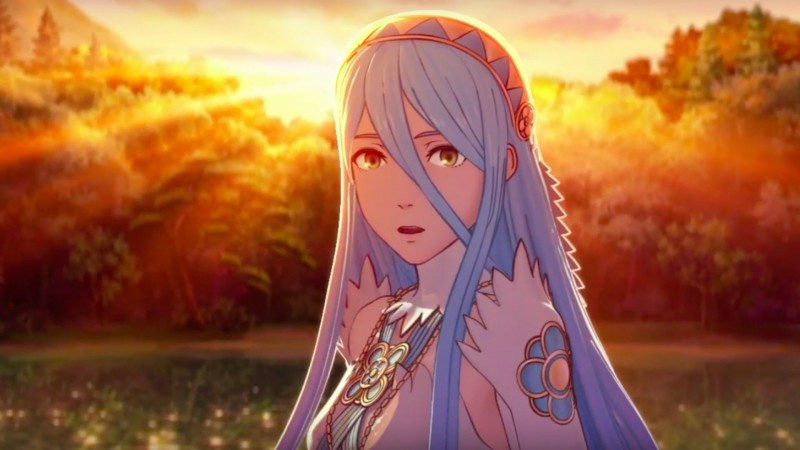
The biggest issue with both the
Birthright and
Conquest scenarios is that they both represent a “bad” ending, where Corrin, allies and even the players themselves finish without feeling truly fulfilled. This was done on purpose thanks to planted plot holes as forced outcomes that left those involved with holes in their hearts. That’s where
Fire Emblem Fates: Revelation comes into play.
This downloadable-only expansion, outside the Special Edition, makes Corrin choose neither Hoshido nor Nohr, and decides to forge a different path. Both families then react harshly and disown you except Azura, a character that doubled as a plot device in the previous games, who now knows her (and your) true calling. This campaign mostly takes place in Valla, a different dimension altogether, where the true strings within Hoshido and Nohr are being pulled. Because
Revelation mainly focuses on filling plot holes versus exploring a world for the player to learn and adapt to, it should be the last of the three campaigns you should play.
Revelation contains the “best of both worlds” gameplay, where you have the heightened objectives of
Conquest while gaining the ability to take your time and grind in
Birthright. In addition, you have more allies in this version than the other two, so there’s an exclusive ability to romance characters normally impossible in other versions. If there’s a version to be your go-to
Fire Emblem Fates for StreetPass and multiplayer, it’s this one.
It’s annoying that
Revelation is exclusively DLC to those with
Birthright or
Conquest because its gameplay is really the definitive edition of the
Fates trilogy. It’s sad knowing it will be the path least explored because only in
Revelation did I feel like I’m playing the
Fire Emblem that Intelligent Systems created, not one that felt like 2/3 of one.
That’s not the same with the story however. Though none of the three
Fates are really going to win any Best Writing awards anytime soon, Valla’s locales and enemies are way kookier than the understandable, down-to-earth settings of Hoshido and Nohr. Even the final boss and corny ending kind of fell flat, with me shrugging my shoulders questioning if there was a bigger fight that was supposed to happen.
Combat
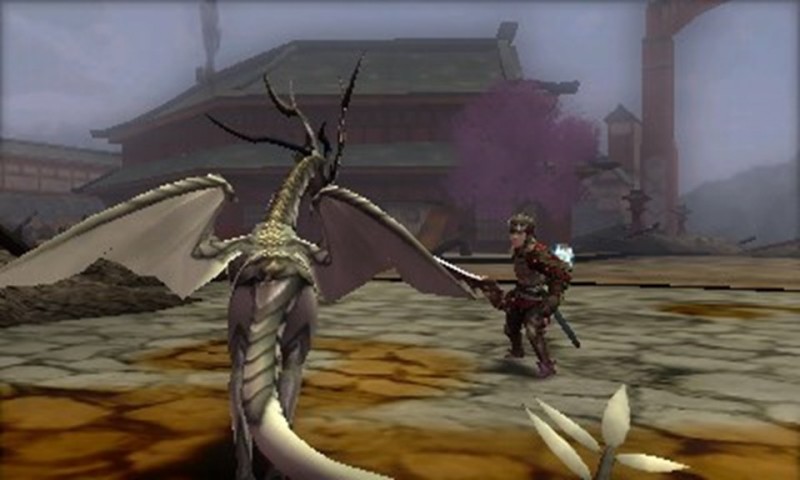
Like I mentioned before,
Fire Emblem are grid-based strategy RPG’s, where allies and enemies have their turn to place their characters in order to defeat one another.
Previous
Fire Emblem games have a rock-paper-scissors advantage system where certain weapons will have a slight advantage on others, and
Fates is no different. Luckily characters can change and upgrade their classes, allowing a better array of weapons to be equipped, so players can have unites carry multiple types of weapons and change them before each fight. It’s just another layer of strategy peppered onto the game that makes it more fun, but I do wished they kept the breakable weapons (more on that in a bit).
New to
Fire Emblem Fates is the Dragon Veins, special spots on the field where Corrin, her siblings or any of their kids can activate. These vary from drying rivers to neutralizing poisonous areas to creating windstorms to slow down particular units, and they get a bit more creative the further down the line. These are invaluable resources to give an edge in battle, though if you’re fighting a member of the royal family, they can use them too, making those fights in particular very interesting.
Permadeath
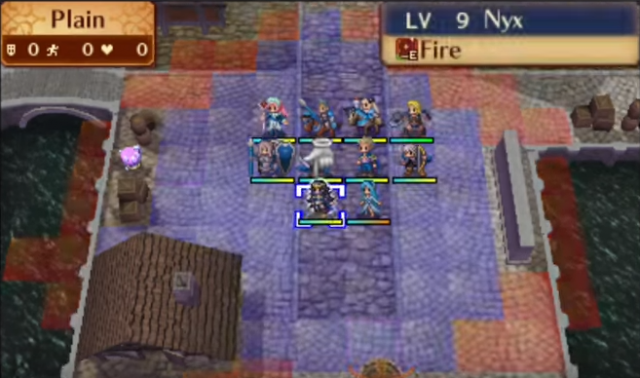
When people first research the
Fire Emblem series, one gameplay element that tends to excite/freak out the player is permadeath, where if a unit’s HP goes to zero, they are permanently removed from the campaign whether from death or, if they’re part of the main story, injured to the point of unusable on the field.
Awakening for the first time gave the option to remove that so that people can play at their own pace. It was a factor of the series’ resurgence of new players and they happily played without fear of being locked without a party.
While I scoffed at using it in
Awakening, I actually played with permadeath off in Fates. Maybe it’s to lower the stress of playing to just wanting to play through the campaigns in a faster pace, but I’m happy to do so because the
Fates trilogy feels brutal with it on, way more so than any other localized
Fire Emblem. I started with it on because I always had it in previous installments, but enemies seem to have a heightened AI as well as a higher critical hit rate to the point that I no longer wanted to deal with the consistent resets. Even after turning the option off, I refrained from rushing enemies and played tactfully, and I rarely left the field without a KO’d ally.
There’s a new mode in
Fire Emblem Fates for permadeath, Phoenix, which revives characters the next turn, which feels like overkill in the easy department.
Weapons
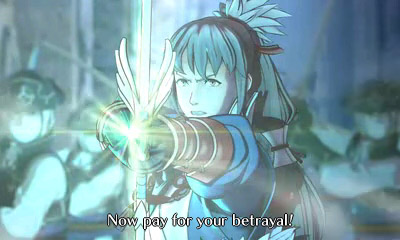
Another
Fire Emblem staple that was heavily altered in
Fire Emblem Fates was the breakable weapons. Normally in the series, non-legendary weapons would have an HP gauge on them, decreasing by one with every hit. Once the HP goes to zero, the weapon breaks and players must adapt by having characters equip multiple swords or axes unless they want they character unarmed.
Fates removes this element aside from staves for some reason or another, and it feels like a lesser
Fire Emblem because of it. I was always entering the battlefield examining if I need to shop for more swords, staves or axes and now only had to worry about healers. While it passed my mind throughout the games, in retrospect it was missed since it decreased a layer of strategy.
That doesn’t mean weapons should be upgraded without worry however, because the developers decided on punishing those craving extra damage with penalties to higher grade weapons with cutting stats like speed, defense or attack with every attack. To be honest, I vastly ignored the penalties and it rarely stopped the onslaught enemies were about to endure.
My Castle
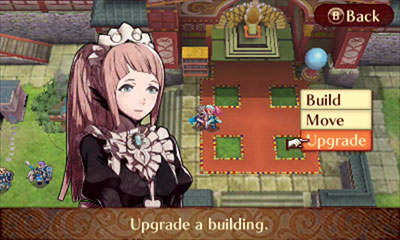
New to the
Fire Emblem games is a base where you hang out between battles. Dubbed My Castle, this area allows you to build and upgrade shops, upgrade weapons with smithies, interact with the characters in your army.
With a character base as large as
Fire Emblem Fates, it’s inevitable for fans to ship characters creating their own romances. Thankfully, Intelligent Systems actually made that a feature! Characters who fight and defend adjacent to one another will get closer and unlock some well-written conversations, which varies from funny to character building. After unlocking a few conversations between two characters, the option open to marry them and doing so can create a child based on the father, though carries the mother’s hair color as well as both parent’s skills. It’s a neat portion of the game that was carried over from
Awakening, and it forces the developers and the localizers to do their best creating characters unique, fun and captivating enough to make it worth doing, but some characters get too much into the super-otaku (weeaboo) territory with anime stereotypes like hot springs and maids (though they’re super useful). Though the thought process having the kids reappear as teenagers while the parents’ are still in their twenties is eye-rolling at best.
One other feature of My Castle is visiting other people’s castles. You can find those who recently updated, recommended ones, friends’ castles or those you get via StreetPass. They allow some perks like giving experience to your castle for leveling up and the ability to shop at stores not yet upgraded or available in yours. It gives a reason to care about yours since your castle could be visited at anytime. You can even fight the team of that castle to test yours, or fight within yours with invasions of CPU characters.
Fire Emblem Fates also uses amiibo figures to add them to your army, but is relegated to the original four
Fire Emblem characters (sorry Roy). Scanning your Marth, Ike, Lucina and/or Robin figures a few times between fights allow them to meet Corrin, followed by the chance to unlock them as warriors by beating them in battle. Though for many Nintendo fans to actually do that, the company first needs to get more of those four on store shelves.
Multiplayer
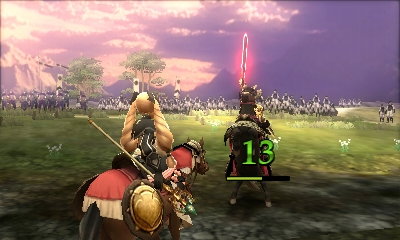
One of my biggest gripes with
Fire Emblem Awakening was the lack of multiplayer, but
Fates fortunately brings back the forgotten mode. Now you can play against anyone online with a decent selection of maps, both players’ My Castles included, in 5v5 battles. Granted it’s robust in
Fire Emblem standards, but unfortunately it isn’t in comparison to most other games out there, with 5v5 being the most severe limitation. After trying it for a bit, I was demanding more from the mode.
Fates As A Trilogy
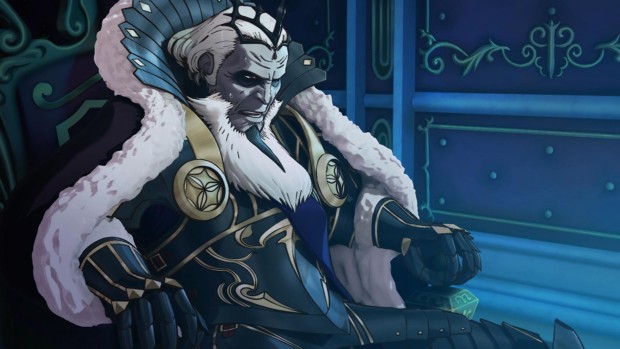
With the discussion of the differences between the three versions, I can discuss the conclusion I have with
Fire Emblem Fates being developed as three separate games.
Fates was a nifty project with playing out how differently life can go when you make a big decision.
Normally I love these “butterfly effect” scenarios and how crazy that one thing can spiral to a whole new conclusion, but Nintendo wanted to deliver this game as three different experiences... and three different SKUs that are sold separately. While I’ll never think like a conspiracy theorist, I do feel like Nintendo is double-dipping the hardcore Nintendo fan by having them spend at least $80 to experience the three paths: One full version is $40 and the other path can be bought digitally as DLC for $20, and Revelation is only DLC for $20; or the Special Edition for $80 outright. That’s not counting the first bit of DLC maps at $18, with more to go.
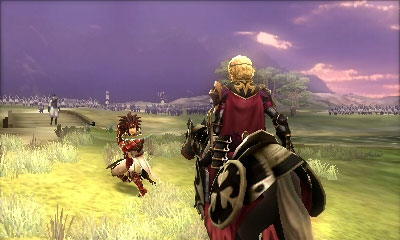
My feeling behind that is because none of the three versions lasted as long as
Fire Emblem Awakening did singlehandedly. I put around 60-65 hours in the trilogy (about 22, 13 and 25 hours in
Birthright,
Conquest and
Revelation respectfully) and was able to beat the games, romance many of the characters and fool around with other things like the DLC maps (also sold separately).
Awakening clocked around eighty hours while doing about the same breadth of content. It bothers me because I dumped $80 to experience less than I did with Awakening’s $40.
Though this sounds very negative, let me say that I had fun throughout the trilogy thanks to its addictive gameplay and likable characters, I just wished all that could have been done without games with purposely missing elements and releveling the same characters thrice over. Plus, even at the $80 price point for the trilogy, I still feel like I spent enough time and play than I would with two traditional AAA console games.
Pros
- + + + + + + + + Birthright + + + + + + + +
- New, fresh locale for the Fire Emblem series
- Hoshido's royal family is cooler
- Story overall was the best
- Grinding allows for better character development and base building
- + + + + + + + Conquest + + + + + + + +
- Objectives are more diverse
- Corrin has a emotionally rough ride throughout the story, making her a better hero for it
- Difficulty more Fire Emblem-esque
- Better maps to fight
- It's limitations can be seen as a plus for strategy experts wanting a challenge
- + + + + + Revelation + + + + + + +
- Best gameplay of the three, mixing grinding with tighter objectives
- Widest cast of characters to join/interact with
- + + + Fire Emblem Fates Trilogy + + +
- Amazing usage of Nintendo 3DS hardware
- Same amazing strategy play from the veteran Nintendo series
- Cast of characters were super likable, fun to see explored in convos
- My Castle mode added/unifies much of the secondary gameplay in Fire Emblem
- Multiplayer returns
- Nine save files to share
- Permadeath adds a ton of suspense (Too much sometimes)
- Dragon Veins adding some spice to maps
- Kaze was an interesting character that you gained in all three versions
Cons
- - - - - - - - Birthright - - - - - - -
- Too easy, and a bigger letdown if played second
- Objectives are too plain
- Corrin doesn't play as much of a hero on this path
- - - - - - - - Conquest - - - - - - -
- A lot of replaying is necessary to see all the character development
- European-esque setting and drab country feels blah in comparison to Birthright
- Less grinding/doing other things means a much shorter campaign
- - - - - - - - Revelation - - - - - - -
- Worst story out of the three
- Last fight was such a letdown
- Valla sucks in comparison to Nohr and Hoshido
- Download-only limits the audience that can experience it
- - - - Fire Emblem Fates Trilogy - - -
- One of the most expensive Nintendo games there is
- Each version left something missing
- Weapons didn't break
- Multiplayer was a little bare on content
- Corrin's dragon lineage was barely touched
- Azura wasn't as intriguing as a character despite her focus in the trilogy
- Both retail versions have "bad endings," defeats the point to choose!
 Fire Emblem Fates is a weird game to review because it’s three games that are being reviewed: Fire Emblem Fates: Birthright, Fire Emblem Fates: Conquest and Fire Emblem Fates: Revelation, with each of them following a different “what if” scenario during a bitter war between two nations.
You follow Corrin, a customizable avatar much like Awakening’s Robin, a princess (or prince, though she will be referred as a female in the review) of the Japanese-esque Hoshido that was kidnapped at a young age and raised with the royal family of the European-looking Nohr. Corrin learns of her Hoshidian backstory as well as her dragon origins after stumbling into the country, and with a more educated opinion must decide in front of both royal families which side to fight on.
Birthright
Fire Emblem Fates is a weird game to review because it’s three games that are being reviewed: Fire Emblem Fates: Birthright, Fire Emblem Fates: Conquest and Fire Emblem Fates: Revelation, with each of them following a different “what if” scenario during a bitter war between two nations.
You follow Corrin, a customizable avatar much like Awakening’s Robin, a princess (or prince, though she will be referred as a female in the review) of the Japanese-esque Hoshido that was kidnapped at a young age and raised with the royal family of the European-looking Nohr. Corrin learns of her Hoshidian backstory as well as her dragon origins after stumbling into the country, and with a more educated opinion must decide in front of both royal families which side to fight on.
Birthright
 Fire Emblem Fates: Birthright is where Corrin chooses Hoshido over her known family in Nohr. There she joins her bloodline siblings Ryoma, Takumi, Sakura and Hinoka and stop Nohr’s King Garon (Your kidnapper/foster father) from invading Hoshido.
The story in Birthright trumps the one in Conquest because the land of Hoshido is one fresh and cool in the Fire Emblem series. Normally Fire Emblem characters look very medieval in tone, with knights, mages and thieves equipping swords, spears, knives, axes and using magical rods, Conquest included. Since Hoshido is Japanese in tone, characters look like those in feudal Japan with samurai, ninjas and shrine maidens wielding katanas, naginanas, shurikens and magical festals. Despite a few in-game traits, this change is mainly aesthetic, but it doesn’t stop looking cool in the process. In addition the locales in Hoshido are bright colorful and different to the series, while Nohr is bleak, dark, dreary and quite a downer in comparison. Granted, that’s the point of the two versions and their very different nations, but Hoshido not only look better, it’s exhilarating for the Fire Emblem universe.
Birthright plays most like Fire Emblem Awakening, and is the most recommended place to begin in the Fire Emblem Fates trilogy. All the Fire Emblem Fates games are grid-based strategy RPGs with the same exact gameplay mechanics and twenty-seven story chapters, Birthright is the simpler of the bunch. Most of the goals within the Hoshido campaign are to defeat all the enemies on the map, and unlike Conquest, you can replay stages and grind your party to your hearts desire. This one is the best to start for newcomers because it gets them used to the mechanics, while veterans can take care of the easiest one first since it’ll feel like a downgrade if you’re playing this one secondly.
Conquest
Fire Emblem Fates: Birthright is where Corrin chooses Hoshido over her known family in Nohr. There she joins her bloodline siblings Ryoma, Takumi, Sakura and Hinoka and stop Nohr’s King Garon (Your kidnapper/foster father) from invading Hoshido.
The story in Birthright trumps the one in Conquest because the land of Hoshido is one fresh and cool in the Fire Emblem series. Normally Fire Emblem characters look very medieval in tone, with knights, mages and thieves equipping swords, spears, knives, axes and using magical rods, Conquest included. Since Hoshido is Japanese in tone, characters look like those in feudal Japan with samurai, ninjas and shrine maidens wielding katanas, naginanas, shurikens and magical festals. Despite a few in-game traits, this change is mainly aesthetic, but it doesn’t stop looking cool in the process. In addition the locales in Hoshido are bright colorful and different to the series, while Nohr is bleak, dark, dreary and quite a downer in comparison. Granted, that’s the point of the two versions and their very different nations, but Hoshido not only look better, it’s exhilarating for the Fire Emblem universe.
Birthright plays most like Fire Emblem Awakening, and is the most recommended place to begin in the Fire Emblem Fates trilogy. All the Fire Emblem Fates games are grid-based strategy RPGs with the same exact gameplay mechanics and twenty-seven story chapters, Birthright is the simpler of the bunch. Most of the goals within the Hoshido campaign are to defeat all the enemies on the map, and unlike Conquest, you can replay stages and grind your party to your hearts desire. This one is the best to start for newcomers because it gets them used to the mechanics, while veterans can take care of the easiest one first since it’ll feel like a downgrade if you’re playing this one secondly.
Conquest
 Meanwhile Fire Emblem Fates: Conquest is the other side of the story and Corrin sticks with her Nohrian brothers and sisters: Xander, Leo, Camilla and Elise. Returning from Hoshido, Corrin is tasked by King Garon to calm a revolution brewing in Nohr while conspiring to invade Hoshido to claim its throne to stop the true evil within the two kingdoms.
To be honest, playing Conquest right after Birthright was tough because reverting to the same old medieval theme after the breath of fresh air that was Hoshido. While that was true through most of the game, your allies, mainly your siblings and their loyalty to Corrin made me care about them despite dealing with them mere hours ago in Birthright. Corrin is no slouch either, where Birthright is more traditional “good guys defend against bad guys,” she has to endure some tough decisions in Conquest while Garon and his ruthless retainers breathe down her back. Corrin also feels more like a leader as her siblings and allies follow her un-Nohr-like choices backed by trust; especially compared to Birthright, where she continues the path Ryoma already started and performing nothing but common sense decisions.
Unlike Birthright, there are few battles in Conquest where the sole goal is to rout the enemy. You will be retreating, fighting with time limits and sieging the base (which is only killing the boss and landing on their space to end the fight). These fights are rife with enemy reinforcements and difficult map terrain to cover too, and if that’s not enough, you cannot replay stages either. This limits what you can do throughout the twenty-seven chapters since it makes you have to think smartly and clearly when it comes many of the other gameplay elements like building relationships and the My Castle upgrades. Many who are not 100% in the know with Fire Emblem may think that’s a bit of a down point, but this is classic Fire Emblem choice-making. It’s only enhanced because many older Fire Emblems didn’t have to worry about romancing characters or upgrading castles to benefit your party more, making this one the best to replay over again. I also say that because it’s the shortest one in the bunch thanks to the lack of time you have to do some extra bits.
Revelation
Meanwhile Fire Emblem Fates: Conquest is the other side of the story and Corrin sticks with her Nohrian brothers and sisters: Xander, Leo, Camilla and Elise. Returning from Hoshido, Corrin is tasked by King Garon to calm a revolution brewing in Nohr while conspiring to invade Hoshido to claim its throne to stop the true evil within the two kingdoms.
To be honest, playing Conquest right after Birthright was tough because reverting to the same old medieval theme after the breath of fresh air that was Hoshido. While that was true through most of the game, your allies, mainly your siblings and their loyalty to Corrin made me care about them despite dealing with them mere hours ago in Birthright. Corrin is no slouch either, where Birthright is more traditional “good guys defend against bad guys,” she has to endure some tough decisions in Conquest while Garon and his ruthless retainers breathe down her back. Corrin also feels more like a leader as her siblings and allies follow her un-Nohr-like choices backed by trust; especially compared to Birthright, where she continues the path Ryoma already started and performing nothing but common sense decisions.
Unlike Birthright, there are few battles in Conquest where the sole goal is to rout the enemy. You will be retreating, fighting with time limits and sieging the base (which is only killing the boss and landing on their space to end the fight). These fights are rife with enemy reinforcements and difficult map terrain to cover too, and if that’s not enough, you cannot replay stages either. This limits what you can do throughout the twenty-seven chapters since it makes you have to think smartly and clearly when it comes many of the other gameplay elements like building relationships and the My Castle upgrades. Many who are not 100% in the know with Fire Emblem may think that’s a bit of a down point, but this is classic Fire Emblem choice-making. It’s only enhanced because many older Fire Emblems didn’t have to worry about romancing characters or upgrading castles to benefit your party more, making this one the best to replay over again. I also say that because it’s the shortest one in the bunch thanks to the lack of time you have to do some extra bits.
Revelation
 The biggest issue with both the Birthright and Conquest scenarios is that they both represent a “bad” ending, where Corrin, allies and even the players themselves finish without feeling truly fulfilled. This was done on purpose thanks to planted plot holes as forced outcomes that left those involved with holes in their hearts. That’s where Fire Emblem Fates: Revelation comes into play.
This downloadable-only expansion, outside the Special Edition, makes Corrin choose neither Hoshido nor Nohr, and decides to forge a different path. Both families then react harshly and disown you except Azura, a character that doubled as a plot device in the previous games, who now knows her (and your) true calling. This campaign mostly takes place in Valla, a different dimension altogether, where the true strings within Hoshido and Nohr are being pulled. Because Revelation mainly focuses on filling plot holes versus exploring a world for the player to learn and adapt to, it should be the last of the three campaigns you should play.
Revelation contains the “best of both worlds” gameplay, where you have the heightened objectives of Conquest while gaining the ability to take your time and grind in Birthright. In addition, you have more allies in this version than the other two, so there’s an exclusive ability to romance characters normally impossible in other versions. If there’s a version to be your go-to Fire Emblem Fates for StreetPass and multiplayer, it’s this one.
It’s annoying that Revelation is exclusively DLC to those with Birthright or Conquest because its gameplay is really the definitive edition of the Fates trilogy. It’s sad knowing it will be the path least explored because only in Revelation did I feel like I’m playing the Fire Emblem that Intelligent Systems created, not one that felt like 2/3 of one.
That’s not the same with the story however. Though none of the three Fates are really going to win any Best Writing awards anytime soon, Valla’s locales and enemies are way kookier than the understandable, down-to-earth settings of Hoshido and Nohr. Even the final boss and corny ending kind of fell flat, with me shrugging my shoulders questioning if there was a bigger fight that was supposed to happen.
Combat
The biggest issue with both the Birthright and Conquest scenarios is that they both represent a “bad” ending, where Corrin, allies and even the players themselves finish without feeling truly fulfilled. This was done on purpose thanks to planted plot holes as forced outcomes that left those involved with holes in their hearts. That’s where Fire Emblem Fates: Revelation comes into play.
This downloadable-only expansion, outside the Special Edition, makes Corrin choose neither Hoshido nor Nohr, and decides to forge a different path. Both families then react harshly and disown you except Azura, a character that doubled as a plot device in the previous games, who now knows her (and your) true calling. This campaign mostly takes place in Valla, a different dimension altogether, where the true strings within Hoshido and Nohr are being pulled. Because Revelation mainly focuses on filling plot holes versus exploring a world for the player to learn and adapt to, it should be the last of the three campaigns you should play.
Revelation contains the “best of both worlds” gameplay, where you have the heightened objectives of Conquest while gaining the ability to take your time and grind in Birthright. In addition, you have more allies in this version than the other two, so there’s an exclusive ability to romance characters normally impossible in other versions. If there’s a version to be your go-to Fire Emblem Fates for StreetPass and multiplayer, it’s this one.
It’s annoying that Revelation is exclusively DLC to those with Birthright or Conquest because its gameplay is really the definitive edition of the Fates trilogy. It’s sad knowing it will be the path least explored because only in Revelation did I feel like I’m playing the Fire Emblem that Intelligent Systems created, not one that felt like 2/3 of one.
That’s not the same with the story however. Though none of the three Fates are really going to win any Best Writing awards anytime soon, Valla’s locales and enemies are way kookier than the understandable, down-to-earth settings of Hoshido and Nohr. Even the final boss and corny ending kind of fell flat, with me shrugging my shoulders questioning if there was a bigger fight that was supposed to happen.
Combat
 Like I mentioned before, Fire Emblem are grid-based strategy RPG’s, where allies and enemies have their turn to place their characters in order to defeat one another.
Previous Fire Emblem games have a rock-paper-scissors advantage system where certain weapons will have a slight advantage on others, and Fates is no different. Luckily characters can change and upgrade their classes, allowing a better array of weapons to be equipped, so players can have unites carry multiple types of weapons and change them before each fight. It’s just another layer of strategy peppered onto the game that makes it more fun, but I do wished they kept the breakable weapons (more on that in a bit).
New to Fire Emblem Fates is the Dragon Veins, special spots on the field where Corrin, her siblings or any of their kids can activate. These vary from drying rivers to neutralizing poisonous areas to creating windstorms to slow down particular units, and they get a bit more creative the further down the line. These are invaluable resources to give an edge in battle, though if you’re fighting a member of the royal family, they can use them too, making those fights in particular very interesting.
Permadeath
Like I mentioned before, Fire Emblem are grid-based strategy RPG’s, where allies and enemies have their turn to place their characters in order to defeat one another.
Previous Fire Emblem games have a rock-paper-scissors advantage system where certain weapons will have a slight advantage on others, and Fates is no different. Luckily characters can change and upgrade their classes, allowing a better array of weapons to be equipped, so players can have unites carry multiple types of weapons and change them before each fight. It’s just another layer of strategy peppered onto the game that makes it more fun, but I do wished they kept the breakable weapons (more on that in a bit).
New to Fire Emblem Fates is the Dragon Veins, special spots on the field where Corrin, her siblings or any of their kids can activate. These vary from drying rivers to neutralizing poisonous areas to creating windstorms to slow down particular units, and they get a bit more creative the further down the line. These are invaluable resources to give an edge in battle, though if you’re fighting a member of the royal family, they can use them too, making those fights in particular very interesting.
Permadeath
 When people first research the Fire Emblem series, one gameplay element that tends to excite/freak out the player is permadeath, where if a unit’s HP goes to zero, they are permanently removed from the campaign whether from death or, if they’re part of the main story, injured to the point of unusable on the field. Awakening for the first time gave the option to remove that so that people can play at their own pace. It was a factor of the series’ resurgence of new players and they happily played without fear of being locked without a party.
While I scoffed at using it in Awakening, I actually played with permadeath off in Fates. Maybe it’s to lower the stress of playing to just wanting to play through the campaigns in a faster pace, but I’m happy to do so because the Fates trilogy feels brutal with it on, way more so than any other localized Fire Emblem. I started with it on because I always had it in previous installments, but enemies seem to have a heightened AI as well as a higher critical hit rate to the point that I no longer wanted to deal with the consistent resets. Even after turning the option off, I refrained from rushing enemies and played tactfully, and I rarely left the field without a KO’d ally.
There’s a new mode in Fire Emblem Fates for permadeath, Phoenix, which revives characters the next turn, which feels like overkill in the easy department.
Weapons
When people first research the Fire Emblem series, one gameplay element that tends to excite/freak out the player is permadeath, where if a unit’s HP goes to zero, they are permanently removed from the campaign whether from death or, if they’re part of the main story, injured to the point of unusable on the field. Awakening for the first time gave the option to remove that so that people can play at their own pace. It was a factor of the series’ resurgence of new players and they happily played without fear of being locked without a party.
While I scoffed at using it in Awakening, I actually played with permadeath off in Fates. Maybe it’s to lower the stress of playing to just wanting to play through the campaigns in a faster pace, but I’m happy to do so because the Fates trilogy feels brutal with it on, way more so than any other localized Fire Emblem. I started with it on because I always had it in previous installments, but enemies seem to have a heightened AI as well as a higher critical hit rate to the point that I no longer wanted to deal with the consistent resets. Even after turning the option off, I refrained from rushing enemies and played tactfully, and I rarely left the field without a KO’d ally.
There’s a new mode in Fire Emblem Fates for permadeath, Phoenix, which revives characters the next turn, which feels like overkill in the easy department.
Weapons
 Another Fire Emblem staple that was heavily altered in Fire Emblem Fates was the breakable weapons. Normally in the series, non-legendary weapons would have an HP gauge on them, decreasing by one with every hit. Once the HP goes to zero, the weapon breaks and players must adapt by having characters equip multiple swords or axes unless they want they character unarmed.
Fates removes this element aside from staves for some reason or another, and it feels like a lesser Fire Emblem because of it. I was always entering the battlefield examining if I need to shop for more swords, staves or axes and now only had to worry about healers. While it passed my mind throughout the games, in retrospect it was missed since it decreased a layer of strategy.
That doesn’t mean weapons should be upgraded without worry however, because the developers decided on punishing those craving extra damage with penalties to higher grade weapons with cutting stats like speed, defense or attack with every attack. To be honest, I vastly ignored the penalties and it rarely stopped the onslaught enemies were about to endure.
My Castle
Another Fire Emblem staple that was heavily altered in Fire Emblem Fates was the breakable weapons. Normally in the series, non-legendary weapons would have an HP gauge on them, decreasing by one with every hit. Once the HP goes to zero, the weapon breaks and players must adapt by having characters equip multiple swords or axes unless they want they character unarmed.
Fates removes this element aside from staves for some reason or another, and it feels like a lesser Fire Emblem because of it. I was always entering the battlefield examining if I need to shop for more swords, staves or axes and now only had to worry about healers. While it passed my mind throughout the games, in retrospect it was missed since it decreased a layer of strategy.
That doesn’t mean weapons should be upgraded without worry however, because the developers decided on punishing those craving extra damage with penalties to higher grade weapons with cutting stats like speed, defense or attack with every attack. To be honest, I vastly ignored the penalties and it rarely stopped the onslaught enemies were about to endure.
My Castle
 New to the Fire Emblem games is a base where you hang out between battles. Dubbed My Castle, this area allows you to build and upgrade shops, upgrade weapons with smithies, interact with the characters in your army.
With a character base as large as Fire Emblem Fates, it’s inevitable for fans to ship characters creating their own romances. Thankfully, Intelligent Systems actually made that a feature! Characters who fight and defend adjacent to one another will get closer and unlock some well-written conversations, which varies from funny to character building. After unlocking a few conversations between two characters, the option open to marry them and doing so can create a child based on the father, though carries the mother’s hair color as well as both parent’s skills. It’s a neat portion of the game that was carried over from Awakening, and it forces the developers and the localizers to do their best creating characters unique, fun and captivating enough to make it worth doing, but some characters get too much into the super-otaku (weeaboo) territory with anime stereotypes like hot springs and maids (though they’re super useful). Though the thought process having the kids reappear as teenagers while the parents’ are still in their twenties is eye-rolling at best.
One other feature of My Castle is visiting other people’s castles. You can find those who recently updated, recommended ones, friends’ castles or those you get via StreetPass. They allow some perks like giving experience to your castle for leveling up and the ability to shop at stores not yet upgraded or available in yours. It gives a reason to care about yours since your castle could be visited at anytime. You can even fight the team of that castle to test yours, or fight within yours with invasions of CPU characters.
Fire Emblem Fates also uses amiibo figures to add them to your army, but is relegated to the original four Fire Emblem characters (sorry Roy). Scanning your Marth, Ike, Lucina and/or Robin figures a few times between fights allow them to meet Corrin, followed by the chance to unlock them as warriors by beating them in battle. Though for many Nintendo fans to actually do that, the company first needs to get more of those four on store shelves.
Multiplayer
New to the Fire Emblem games is a base where you hang out between battles. Dubbed My Castle, this area allows you to build and upgrade shops, upgrade weapons with smithies, interact with the characters in your army.
With a character base as large as Fire Emblem Fates, it’s inevitable for fans to ship characters creating their own romances. Thankfully, Intelligent Systems actually made that a feature! Characters who fight and defend adjacent to one another will get closer and unlock some well-written conversations, which varies from funny to character building. After unlocking a few conversations between two characters, the option open to marry them and doing so can create a child based on the father, though carries the mother’s hair color as well as both parent’s skills. It’s a neat portion of the game that was carried over from Awakening, and it forces the developers and the localizers to do their best creating characters unique, fun and captivating enough to make it worth doing, but some characters get too much into the super-otaku (weeaboo) territory with anime stereotypes like hot springs and maids (though they’re super useful). Though the thought process having the kids reappear as teenagers while the parents’ are still in their twenties is eye-rolling at best.
One other feature of My Castle is visiting other people’s castles. You can find those who recently updated, recommended ones, friends’ castles or those you get via StreetPass. They allow some perks like giving experience to your castle for leveling up and the ability to shop at stores not yet upgraded or available in yours. It gives a reason to care about yours since your castle could be visited at anytime. You can even fight the team of that castle to test yours, or fight within yours with invasions of CPU characters.
Fire Emblem Fates also uses amiibo figures to add them to your army, but is relegated to the original four Fire Emblem characters (sorry Roy). Scanning your Marth, Ike, Lucina and/or Robin figures a few times between fights allow them to meet Corrin, followed by the chance to unlock them as warriors by beating them in battle. Though for many Nintendo fans to actually do that, the company first needs to get more of those four on store shelves.
Multiplayer
 One of my biggest gripes with Fire Emblem Awakening was the lack of multiplayer, but Fates fortunately brings back the forgotten mode. Now you can play against anyone online with a decent selection of maps, both players’ My Castles included, in 5v5 battles. Granted it’s robust in Fire Emblem standards, but unfortunately it isn’t in comparison to most other games out there, with 5v5 being the most severe limitation. After trying it for a bit, I was demanding more from the mode.
Fates As A Trilogy
One of my biggest gripes with Fire Emblem Awakening was the lack of multiplayer, but Fates fortunately brings back the forgotten mode. Now you can play against anyone online with a decent selection of maps, both players’ My Castles included, in 5v5 battles. Granted it’s robust in Fire Emblem standards, but unfortunately it isn’t in comparison to most other games out there, with 5v5 being the most severe limitation. After trying it for a bit, I was demanding more from the mode.
Fates As A Trilogy
 With the discussion of the differences between the three versions, I can discuss the conclusion I have with Fire Emblem Fates being developed as three separate games. Fates was a nifty project with playing out how differently life can go when you make a big decision.
Normally I love these “butterfly effect” scenarios and how crazy that one thing can spiral to a whole new conclusion, but Nintendo wanted to deliver this game as three different experiences... and three different SKUs that are sold separately. While I’ll never think like a conspiracy theorist, I do feel like Nintendo is double-dipping the hardcore Nintendo fan by having them spend at least $80 to experience the three paths: One full version is $40 and the other path can be bought digitally as DLC for $20, and Revelation is only DLC for $20; or the Special Edition for $80 outright. That’s not counting the first bit of DLC maps at $18, with more to go.
With the discussion of the differences between the three versions, I can discuss the conclusion I have with Fire Emblem Fates being developed as three separate games. Fates was a nifty project with playing out how differently life can go when you make a big decision.
Normally I love these “butterfly effect” scenarios and how crazy that one thing can spiral to a whole new conclusion, but Nintendo wanted to deliver this game as three different experiences... and three different SKUs that are sold separately. While I’ll never think like a conspiracy theorist, I do feel like Nintendo is double-dipping the hardcore Nintendo fan by having them spend at least $80 to experience the three paths: One full version is $40 and the other path can be bought digitally as DLC for $20, and Revelation is only DLC for $20; or the Special Edition for $80 outright. That’s not counting the first bit of DLC maps at $18, with more to go.
 My feeling behind that is because none of the three versions lasted as long as Fire Emblem Awakening did singlehandedly. I put around 60-65 hours in the trilogy (about 22, 13 and 25 hours in Birthright, Conquest and Revelation respectfully) and was able to beat the games, romance many of the characters and fool around with other things like the DLC maps (also sold separately). Awakening clocked around eighty hours while doing about the same breadth of content. It bothers me because I dumped $80 to experience less than I did with Awakening’s $40.
Though this sounds very negative, let me say that I had fun throughout the trilogy thanks to its addictive gameplay and likable characters, I just wished all that could have been done without games with purposely missing elements and releveling the same characters thrice over. Plus, even at the $80 price point for the trilogy, I still feel like I spent enough time and play than I would with two traditional AAA console games.
My feeling behind that is because none of the three versions lasted as long as Fire Emblem Awakening did singlehandedly. I put around 60-65 hours in the trilogy (about 22, 13 and 25 hours in Birthright, Conquest and Revelation respectfully) and was able to beat the games, romance many of the characters and fool around with other things like the DLC maps (also sold separately). Awakening clocked around eighty hours while doing about the same breadth of content. It bothers me because I dumped $80 to experience less than I did with Awakening’s $40.
Though this sounds very negative, let me say that I had fun throughout the trilogy thanks to its addictive gameplay and likable characters, I just wished all that could have been done without games with purposely missing elements and releveling the same characters thrice over. Plus, even at the $80 price point for the trilogy, I still feel like I spent enough time and play than I would with two traditional AAA console games.